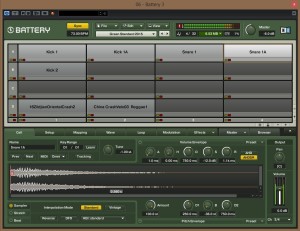The Art of Layering: 5 Principles for More Powerful Drums
We all know how important your drums are to your track. They’re the foundation of your groove, they’re what makes your listener dance. Limp drums can suck the life right out of a song, while a banging drum kit can take a production from good to great.
There’s a ton of good sampled drum kits available today, but that’s just the tip of the iceberg. Layering multiple kicks and snares on top of each other is just the trick for speaker-shaking beats.
1. Complementary Sounds: Pick the Right Kick
So, you’ve found a kick or snare that you like as your base sound, but you want more from it. But more what exactly?
The trick to effectively layering samples is to choose complementary sounds. One kick might have the huge bottom you want, but no real attack or presence. Blending in a punchier, higher-pitched kick will do the trick.
Remember that kick drums aren’t all about the bottom. The definition of the “knock” is found in the higher frequencies, and accenting the perfect bassy kick with one that sounds a bit thin on its own can give you a sound that’s greater than the sum of its parts.
This principle goes for all sorts of drums: If you want more definition from your snare, consider layering some claps underneath it instead of reaching for a compressor or an EQ. You can be subtle about this too, not so much changing the tone of the drum, but just adding some “snap” on top. You don’t necessarily have to hear the added layer distinctly for it to do its job.
You don’t have to limit yourself to just layering with drum sounds either. Think outside the box and use any sounds available. I’ve used axe chops on top of snare drums and grenades layered with kicks. Put on your “sound designer” hat and realize that any sound can be part of a percussive track if you look at it the right way.

Two tracks are triggered from the same MIDI key, providing drum layers for processing in Battery.
2. Switch Your Pitch
If you don’t have the exact drum you want to layer with, getting the right tone may be a simple case of pitching your sample up or down. It’s easy to forget about the pitch of the drums while programming or playing, but it can have a serious impact on your song.
This is especially true with long kicks like 808’s, where even one cent up or down can make a major difference in where it sits in the track. Not only can shifting the pitch give you a fuller or tighter bottom end, but you can also increase clarity and cohesion by having the dominant pitch of your kick drums work within the key of the song.
3. Maintain Your Gain
Gain-staging is always critical, particularly in the early stage of the process. Once you’ve laid 2 or 3 snare drums on top of each other, the output from your sampler is probably going to be pretty hot and may start clipping your other processing down the line.
Even in 32-bit systems where plugins don’t clip, you’ll still be hitting your plugins (and any outboard gear) well outside of their ideal range, and they’re not going to react how you expect them to. It may sound counter-intuitive, but turning things down at the beginning will often let you get much louder later on.
4. Fix Your Phase
It’s easy to forget, but you should never assume two samples are in good phase with each other. You may notice two kicks can seem like a good fit when you audition them separately, but when you put them together they’re not as full as you expected. Flip the phase on one of them and you may be pleasantly surprised.
5. Say No to Solo
If you are mixing a hip-hop song with a record sample in it and that sample has drums, consider those as a part of your drum layers. Even if you high pass filter the bottom of the sample, the attack of the kick may still be present, so think about what it’s already adding to your track when layering.
Picking drums sound out of context may give your song an identity crisis. So ignore the solo button and pick sounds that complement not just each other, but the other elements in your song as well.
Modern production is full of bigger-than-life sounds, and your drums are at the root of that. Layering is a surefire way to get huge drum sounds, and paying attention to these best practices along the way can help ensure you get the most impact for your efforts.
Please note: When you buy products through links on this page, we may earn an affiliate commission.







